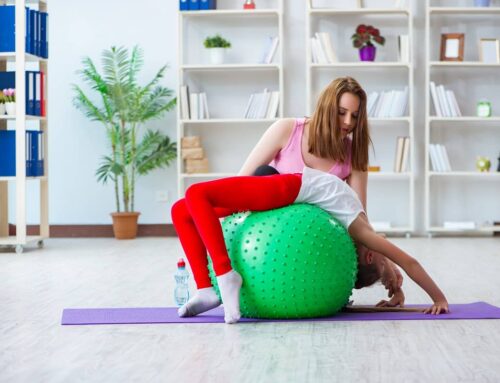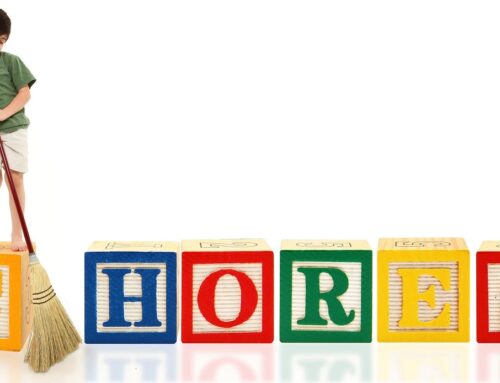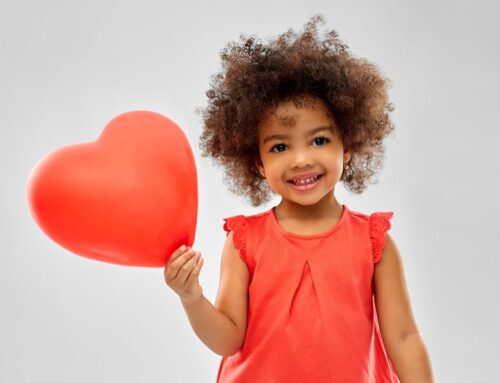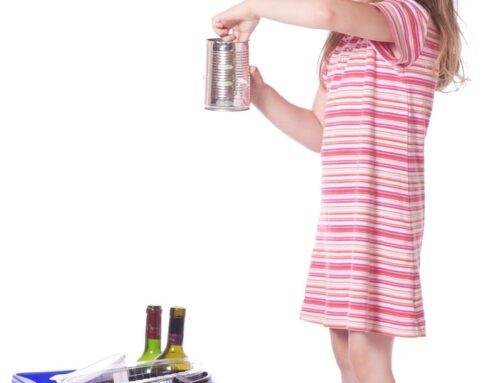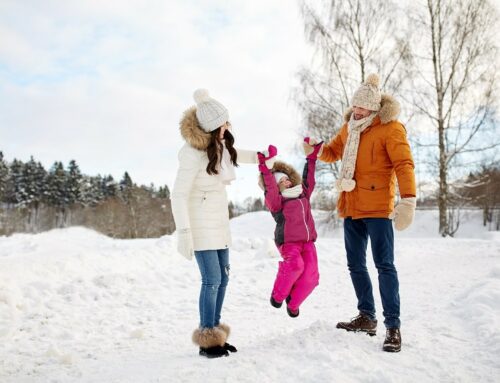Parents: What You Need to Know About Crib Safety
Summit Children’s Center holds safety to the utmost importance including crib safety. There is nothing more important to parents than the peace of mind knowing they have provided the safety and welfare for their children. We are serious about informing all parents on the issue of crib safety and on the potential hazards (some of them deadly) of the crib model known as the “drop-side” crib. No doubt you have seen the drop-side crib. They have the movable side with the capability of having the slides drop down to an adjustable and lower position. There are other cribs with movable sides, but are such that the top portion folds down, permitting easier access to the baby or toddler.
Between the years 2000 and 2010, thirty-two infants and toddlers suffered either suffocation or strangulation deaths caused by or related to these drop-sided cribs, made by a variety of manufacturers. Also during the same time frame, fourteen infant deaths were reported due to babies becoming entrapped in the crib, and specifically within the drop-side mechanism. Many of the deaths that were reported occurred due to the drop-side feature becoming detached and the caregivers being unaware of the detached side. Other deaths occurred when consumers tried to fix a malfunctioning detachable drop-side, but with failing results. Still others were caused by consumers installing the drop-side hardware improperly.
In several reported tragic incidents, parents or caregivers made critical errors when setting up the crib due to incorrect or overly difficult instructions. Oftentimes the drop-side feature still appeared to be functioning in the way it was intended, but the crib’s metal hardware had become stressed and faulty, especially the hardware associated with the drop-side.
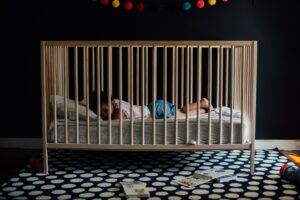
tips for crib safety summit childrens center
Baby Crib Safety Standards
A unanimous vote of the U.S. Consumer Product Safety Commission approved a mandatory set of standards for cribs, both full-size and non full-size, and is now mandated by the 2008 Consumer Safety Improvement Act.
Federal Crib Regulations
Then in 2016, the federal standards for crib safety were updated for the first time in over thirty years. The new standards ushered in a much safer generation of baby cribs, and over 11 million dangerous cribs have now been recalled from the marketplace as a result of the faulty drop-side functionality and the accompanying hardware. These subpar cribs were responsible for sudden infant stangulations and suffocations, but these new standards have brought about the following changes:
- Stopping the manufacturing and sales of the traditional drop-side crib.
- Mattress supports are now stronger.
- Crib hardware is now more durable
- Rigorous crib safety testing is now mandatory. Becoming effective in June of 2011, cribs now manufactured and sold in the United States must adhere to strict compliance with the above federal standards. In-home child care, infant care centers, and locations with public baby and toddler accommodations (hotels,motels) must be in compliance with these federal crib standards in their facilities. The standards were also adopted for full and non full-side cribs.
How to Determine If a Crib I Have Purchased for My Baby Is Safe?
Before a consumer uses a crib, they need to be certain it isn’t on a safety recall list. They should avoid using older model cribs because they may not meet the federally specified safety standards and guidelines. Assembly instructions that come from the manufacturer should be followed carefully, with special attention paid to each part and mechanism, and seeing that they have been installed properly. If a consumer does not fully understand the steps involved in putting the crib together correctly, or if the parts do not fit properly, they should call the manufacturer for help.
Caution
- Never use a crib with any questionable mechanical issues. Make certain all the hardware intended for assembly (screws, bolts, track and clamps) are in their proper places. Be sure to tighten all hardware and continue to check to see if anything has come loose.
- Do not continue to use any crib with missing, broken, or loose parts.
- Never attempt to fix a broken crib. Trying to do your own crib repair could lead to tragic consequences. Nearly thirty percent of all crib deaths are the result of missing or broken hardware or nonworking parts and ineffective repairs.
Even More Important Crib Safety Tips For Parents and Consumers
- The older the crib is and the longer it has been used, the more you will notice the wear and tear on hardware and other joints. This will allow the screws to give out, fall, and plastic parts will become damaged.
- Repeating the assembly and disassembly of a crib will increase the chances of it falling into permanent disrepair.
- If the crib’s wood should warp or shrink with age, the glue can become old and brittle. This can lead to dangerous joint and slat issues.
Crib Safety Tips for Sleeping Babies and Toddlers

crib safety tips for infants summit childrens center ls
Babies, naturally, spend a great deal of time sleeping. Your nursery should be as safe as possible, and the crib or bassinet should be of the highest quality. Doing so will allow your baby to sleep safely, giving you peace of mind, as well as a good night’s sleep for yourselves.
- Remember to put babies on their backs when sleeping in the crib. It is the safest sleep position according to the American Academy of Pediatrics. Parents are urged to put babies down to sleep on the back position. The crib should also be free of any pillows, blankets, or stuffed animals. This is also the safest way in preventing SIDS (Sudden Infant Death Syndrome).
- Parents should be certain there aren’t any gaps in the sides of the crib and mattress.
- Never allow a child older than ten years to use a crib, and never try to modify or repair a faulty crib.
- Never put a crib close to a window with blinds, blind cords, curtain cords, or baby monitor cords.
Top 5 Quality Cribs
Summit Children’s Center picked our favorite five cribs, all following our crib safety guidelines!
- Graco’s Benton 5-in-1 Convertible Crib – Best Convertible Baby Crib
- Babyletto’s 3-in-1 Convertible Crib – Safest Baby Crib
- DaVinci Jenny Lind’s Stationary Crib – Safest Baby Crib Materials
- Delta Children’s Canton 4-in-1 Convertible Baby Crib – Best Adjustable Baby Crib
- Davinci Union’s 3-in-1 Convertible Baby Crib – Best Warranty
What to Consider Before Purchasing a Crib
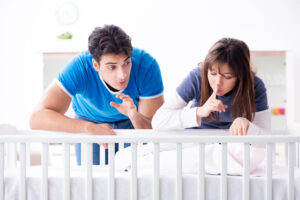
crib safety tips summit childrens center
- Toxin-Free – Many of the popular cribs are simply designed to be trendy and stylish. But that doesn’t mean they are safe for babies. Some paint used on cribs of old used toxins like polyurethane and some woods contain dangerous organic compounds that even spread toxic gasses. Look for a crib that was made with solid wood and non-toxic paint or varnish.
- Safety Standards – When it comes to safety, shop for cribs that are approved by the Juvenile Products Manufacturers Association (JPMA). Their products are put through stringent testing and meet (or even exceed) all safety regulations. Finally, be certain that the crib you buy is Greenguard Gold Certified.
- Slats – The space between slats in your crib should be 2 ⅜ inches (six centimeters). A greater distance is considered unsafe and presents a higher risk of your child getting their arms and legs stuck. Measure the slat distance as you assemble your crib.
Two Important Features of a Quality Baby Crib
-
Conversion
Babies and toddlers develop very quickly and can outgrow a standard crib by the age of two. Save money by considering a conversion crib. Crib conversion kits are available and include a rail for converting to a kid bed safely.
-
Adjustable Mattress Height
As a baby approaches his climbing stage, it becomes easy for him to get out of the crib on his own. Quality cribs will include a mattress with several height adjustment settings. Parents can then adjust the height of the mattress from the infancy stages and as he grows without having to purchase a new crib.
Everyone should sleep soundly at home. With these crib safety tips, we hope to help ease your mind! Contact Summit Children’s Center for any questions and concerns! Sweet dreams.
